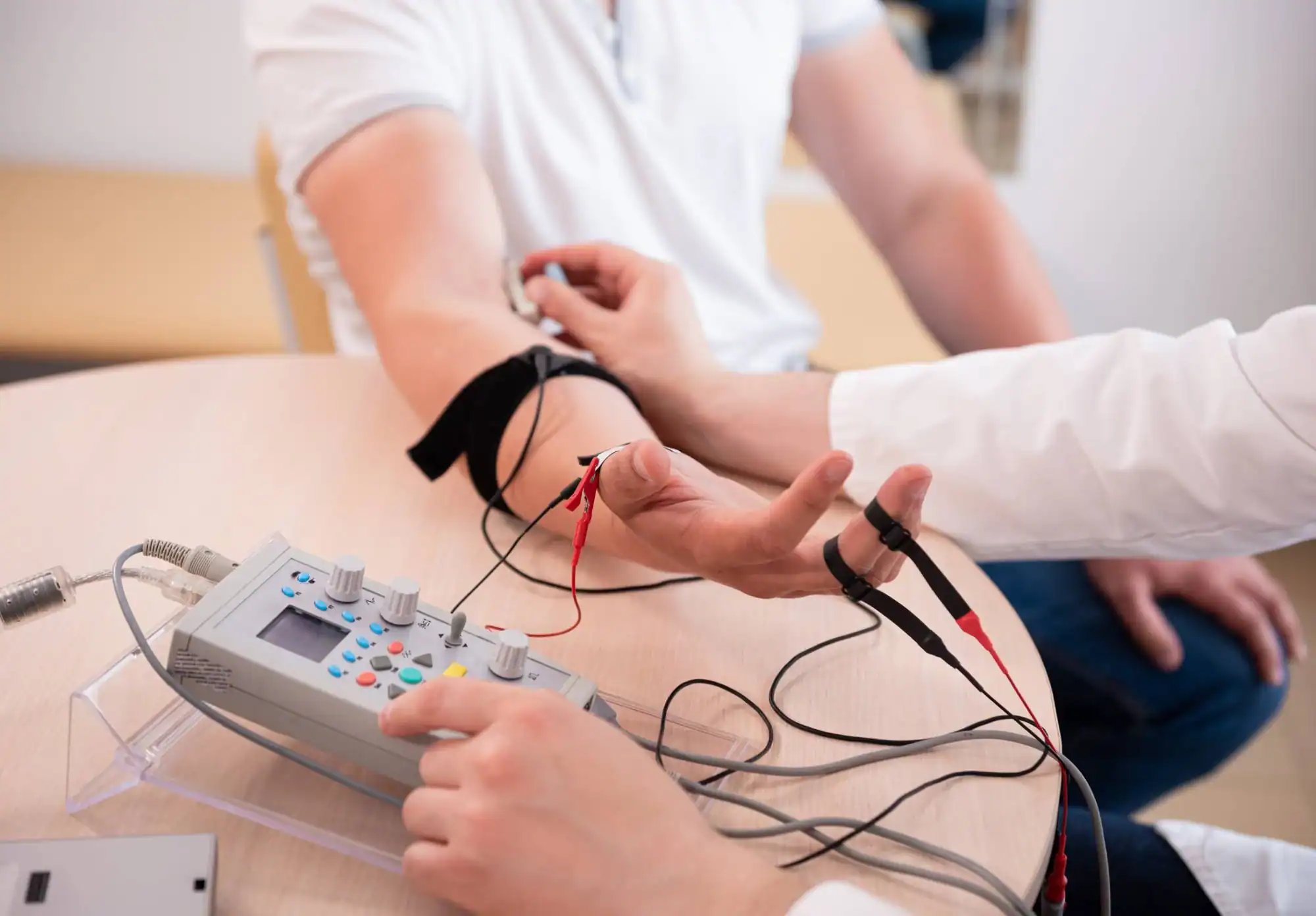Advanced electromyography testing that pinpoints exactly what’s causing your numbness, tingling, or muscle weakness.
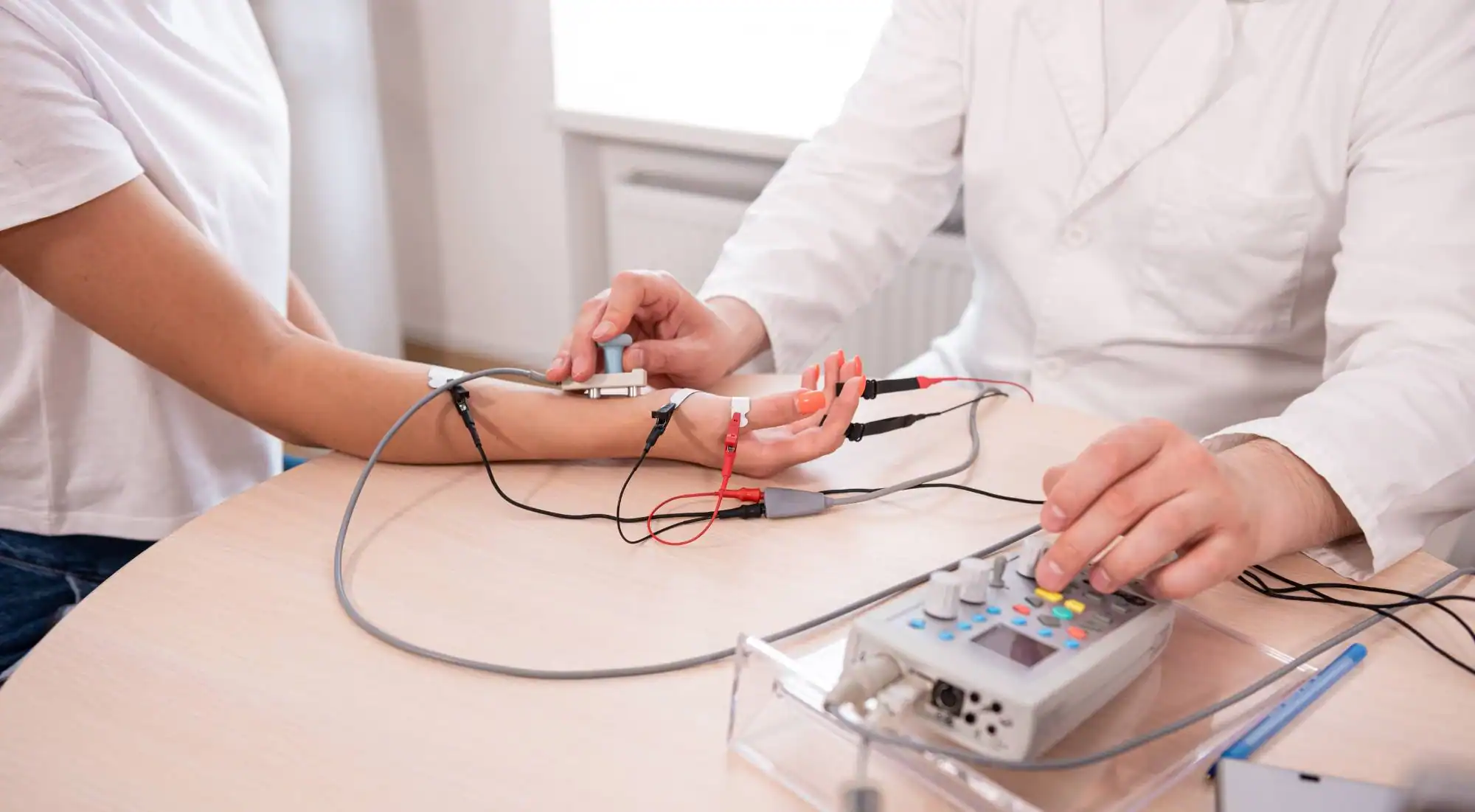
Reviews
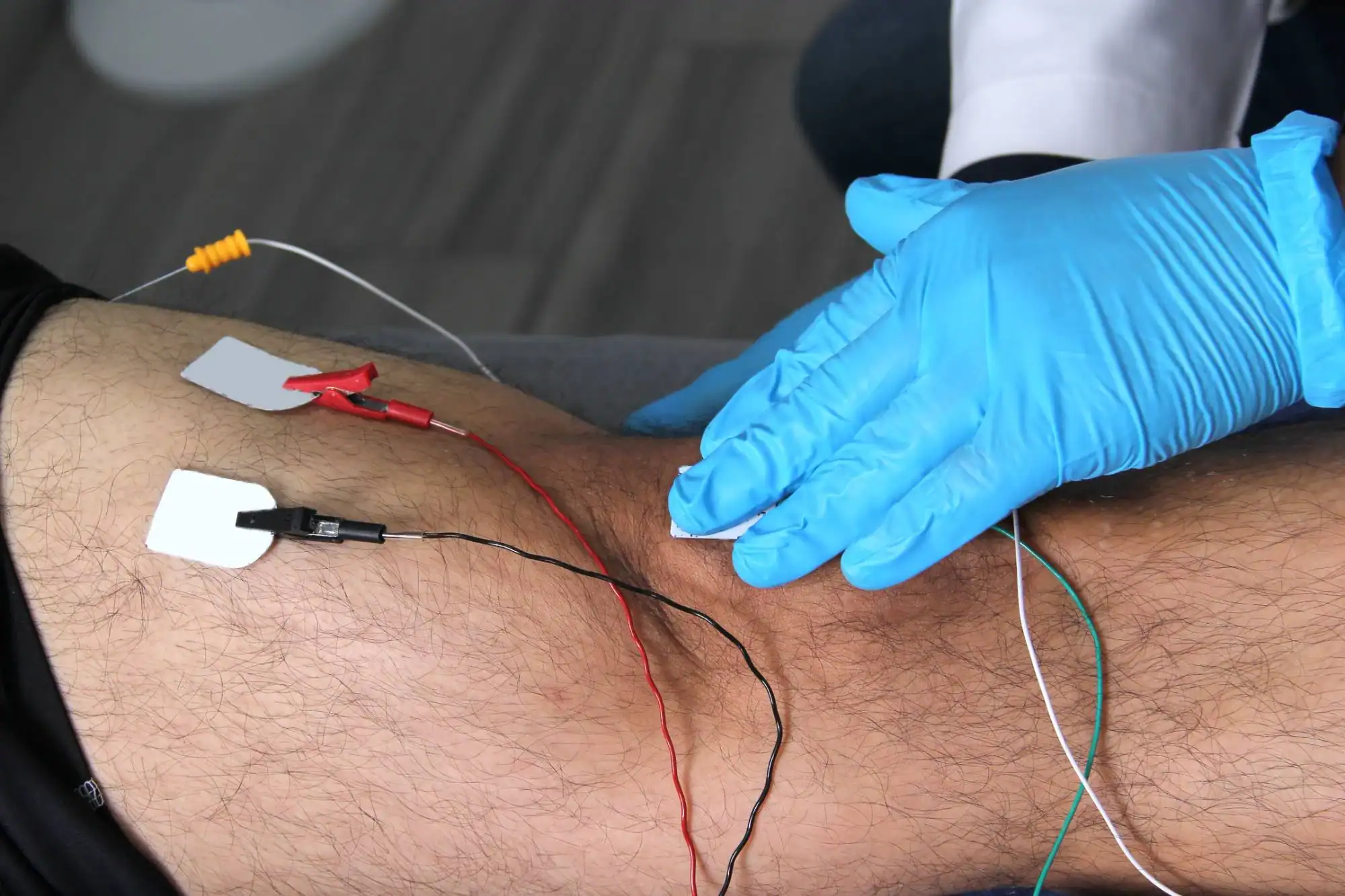
You’ve been dealing with unexplained numbness in your hands. Or muscle weakness that’s getting worse. Maybe tingling that keeps you awake at night.
The uncertainty is almost worse than the symptoms themselves. You need answers, not more guessing.
EMG testing gives you those answers. This diagnostic procedure measures the electrical activity in your muscles and nerves, revealing exactly where the problem lies. Whether it’s carpal tunnel syndrome, a pinched nerve, diabetic neuropathy, or a muscle disorder, you’ll know within the hour.
No more wondering if your symptoms are serious. No more putting off treatment because you’re not sure what’s wrong. Just clear, definitive results that point toward the right solution.
We’ve been serving Oakland Gardens and the surrounding Queens communities for years. Our specialists understand that when you’re dealing with nerve pain or muscle weakness, you need answers fast.
Our team includes board-certified neurologists and physiatrists who perform hundreds of EMG tests each year. We’ve seen every type of nerve and muscle condition, from common carpal tunnel syndrome to complex neuropathies.
What sets our practice apart is the combination of advanced diagnostic equipment with doctors who take time to explain your results clearly. You won’t leave confused about what the test found or what happens next.
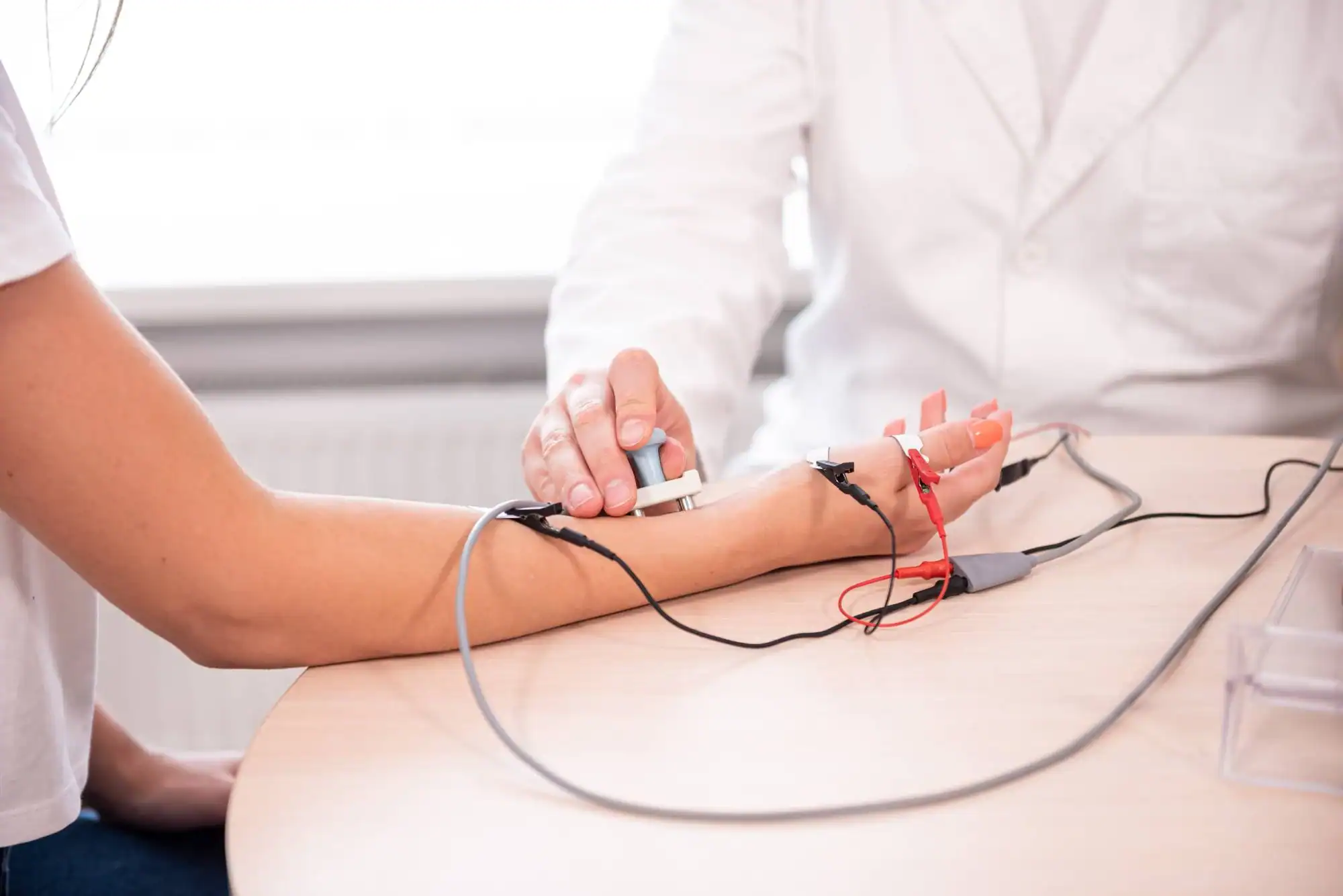
The EMG test has two parts, and both happen during the same appointment. First comes the nerve conduction study. Small electrodes are placed on your skin, and mild electrical pulses measure how well your nerves transmit signals. This part feels like small static shocks.
Next is the electromyography portion. A thin needle electrode is inserted into specific muscles to measure their electrical activity. You’ll be asked to relax the muscle, then contract it gently. The needle insertion causes brief discomfort, similar to getting blood drawn.
The entire process takes 30 to 60 minutes depending on how many nerves and muscles need testing. You can drive yourself home afterward and return to normal activities immediately.
Your doctor reviews the results with you the same day, explaining what the electrical patterns reveal about your nerve and muscle function. If treatment is needed, you’ll discuss options right then.
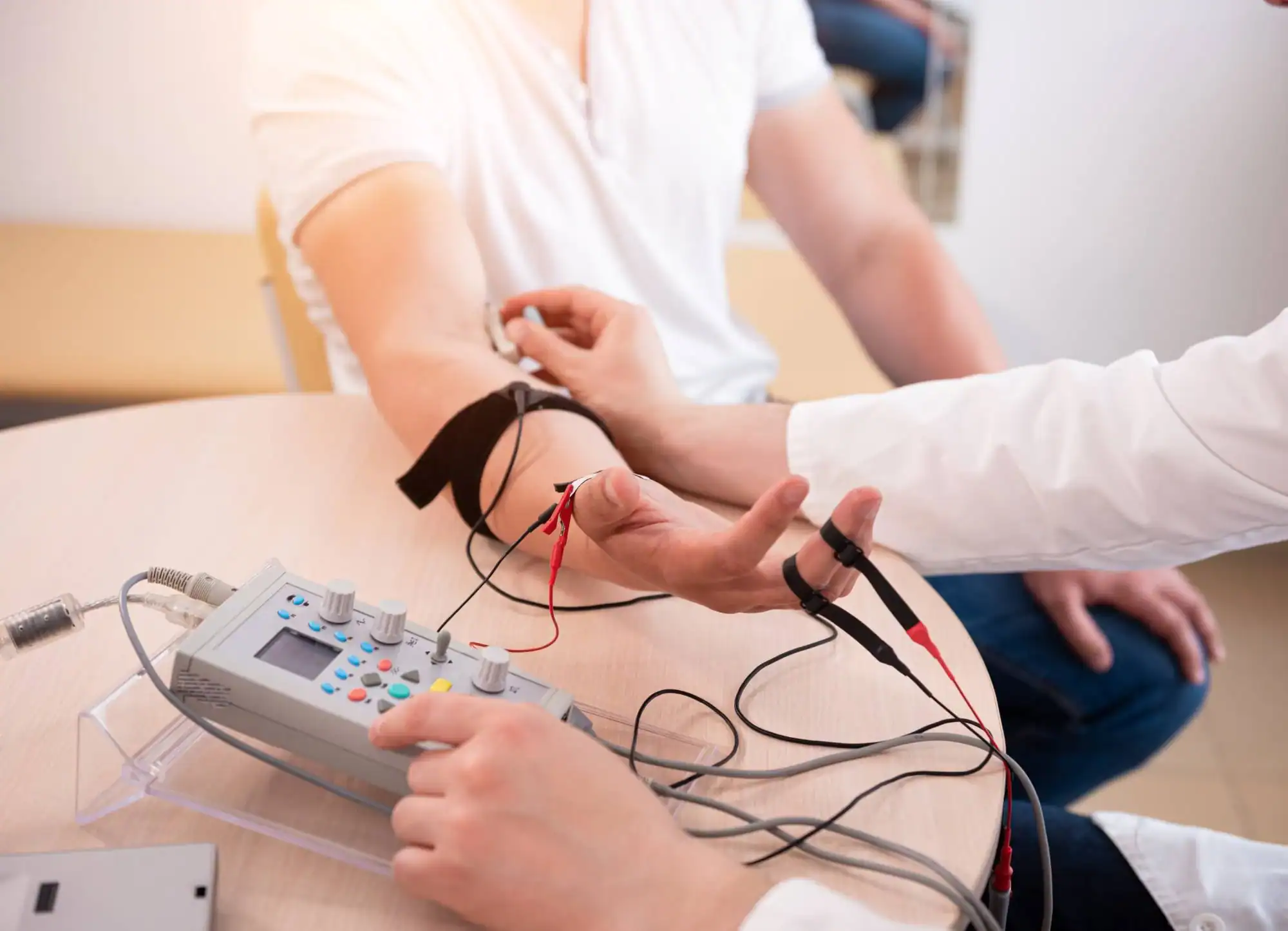
Ready to get started?
Your EMG testing includes both nerve conduction studies and electromyography in one comprehensive appointment. The nerve conduction portion evaluates how well electrical signals travel through your peripheral nerves, detecting problems like carpal tunnel syndrome, ulnar neuropathy, or diabetic nerve damage.
The electromyography component examines the electrical activity within your muscles themselves. This reveals whether muscle weakness stems from nerve damage, muscle disease, or problems with the connection between nerves and muscles.
You’ll receive a detailed report explaining the findings in terms you can understand. If abnormalities are detected, your doctor discusses treatment options immediately rather than scheduling another appointment weeks later. Most insurance plans cover EMG testing when medically necessary, and we handle prior authorization requirements.
